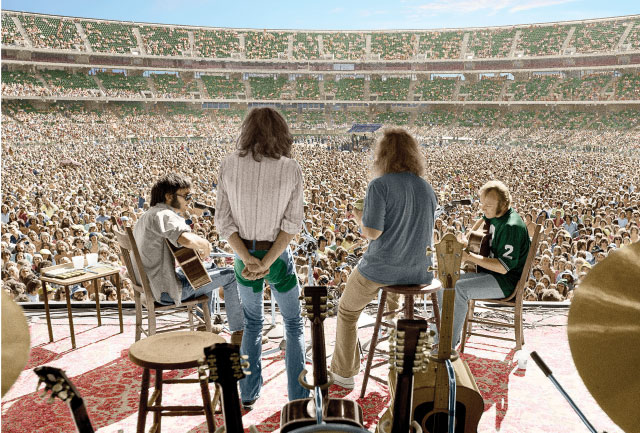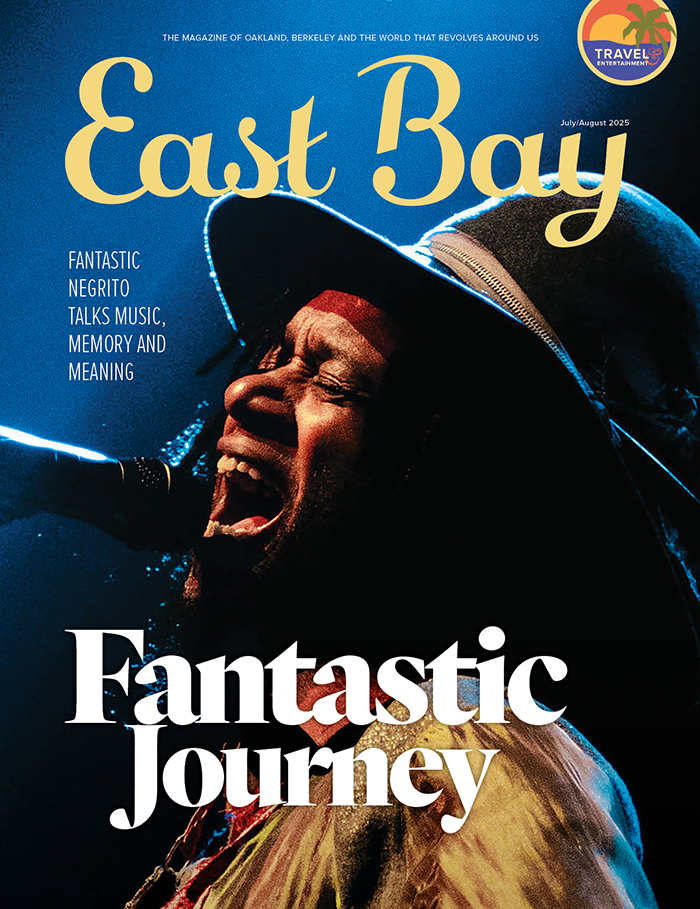Acclaimed rock ’n’ roll photographer and longtime Rockridge resident Joel Bernstein was still a teen when he asked Neil Young if he could play with Young’s new mother-of-pearl-inlaid Martin D-45 backstage. After a few minutes, when Young was called to go onstage, Bernstein quickly tuned the instrument and handed it back. Three years later, Young remembered the perfect tuning and asked Bernstein to be his guitar tech.
Bernstein continued carrying his camera as he toured with Young, Bob Dylan, Bruce Springsteen and Prince, documenting both iconic moments and quiet, reflective ones from a vantage most fans never see.

Bernstein also captured images from the biggest stadium tour since the Beatles—Crosby, Stills, Nash & Young’s 1974 sweep—which became a blueprint for the 1970s model that followed. That model continued for four-and-a-half decades, until the crowded-venue experience came to an abrupt halt in the late winter of 2020, perhaps never to return.
Bernstein remembers how Dylan expected technical excellence as well as mind-reading abilities in on-stage troubleshooting, but Prince pushed the envelope the furthest.
“He had 60 channels of wireless in 1988,” he remembers. “All the microphones were wireless. All the guitars were wireless. Nobody had anything like that.”
“He was very demanding,” Bernstein says. If a guitar string broke, an identical guitar had to be ready in a second. “Literally everything had to be backed up and double-redundant. It was like NASA. You just could not fail.”
The first camera Bernstein handled, at age 12 or 13, was his father’s 35mm single lens reflex. Growing up near Philadelphia, Bernstein was inspired by photographs he saw in Time and Life, and he developed his low-key approach as a high school photojournalist.
“You can’t use a flash in a classroom, no teacher would let you do that,” Bernstein says.
Available light photography became a cornerstone of his visual style.
The first photos Bernstein took and developed himself were of then-obscure singer-songwriter Joni Mitchell. In 1968, when he was 16 and in 11th grade, Bernstein captured a picture of Mitchell sitting backstage that launched his career.
“She looked at the print and said, ‘That’s the best picture of me anyone’s ever taken, would you be my photographer?” Bernstein says.
From there, he began photographing Mitchell at venues such as Carnegie Hall, and became close with other singer-songwriters in Mitchell’s circle, including Young, David Crosby and Graham Nash.
After spending about five days at the University of Wisconsin at Madison, Bernstein visited Southern California to photograph Mitchell and never left.
“People say it must have taken a lot of courage to decide to do that,” he says, of moving to California. “But it was a no-brainer.”
For some 20 years, Bernstein toured with her and other folk and rock figures while taking intimate and free-spirited images of them onstage, backstage and everywhere in between.
His work also found its way onto many album covers, including Neil Young’s acclaimed 1970 album After the Gold Rush.
In many ways, Bernstein’s experience mirrors that of the teen protagonist in Cameron Crowe’s Almost Famous, based on Crowe’s own experiences touring with musicians as a young journalist. In fact, many scenes in Almost Famous were visual re-creations of Bernstein’s photographs.
Bernstein moved to the Bay Area in 1973 at the invitation of Graham Nash, who had a home near San Francisco’s Buena Vista Park.
“I loved the light, as a photographer,” Bernstein says, of the Bay Area.
In 1996, he bought his home in Oakland, where he still lives today. “I have no interest in moving anywhere else,” he says.
While largely retired from taking photos, Bernstein still contributes to archives, box sets and other album releases, and his work is still on display in galleries and at art shows such as the Sonoma Valley Museum of Arts’ current exhibit, “California Rocks! Photographers Who Made The Scene, 1960-1980,” on display now in-person and online.
“It is funny, I could have done this with people who would have faded into nothingness, and nobody would know who they are today,” Bernstein says, of his work. “It’s just my good fortune that the people I was photographing when I was younger went on to these illustrious careers.”











